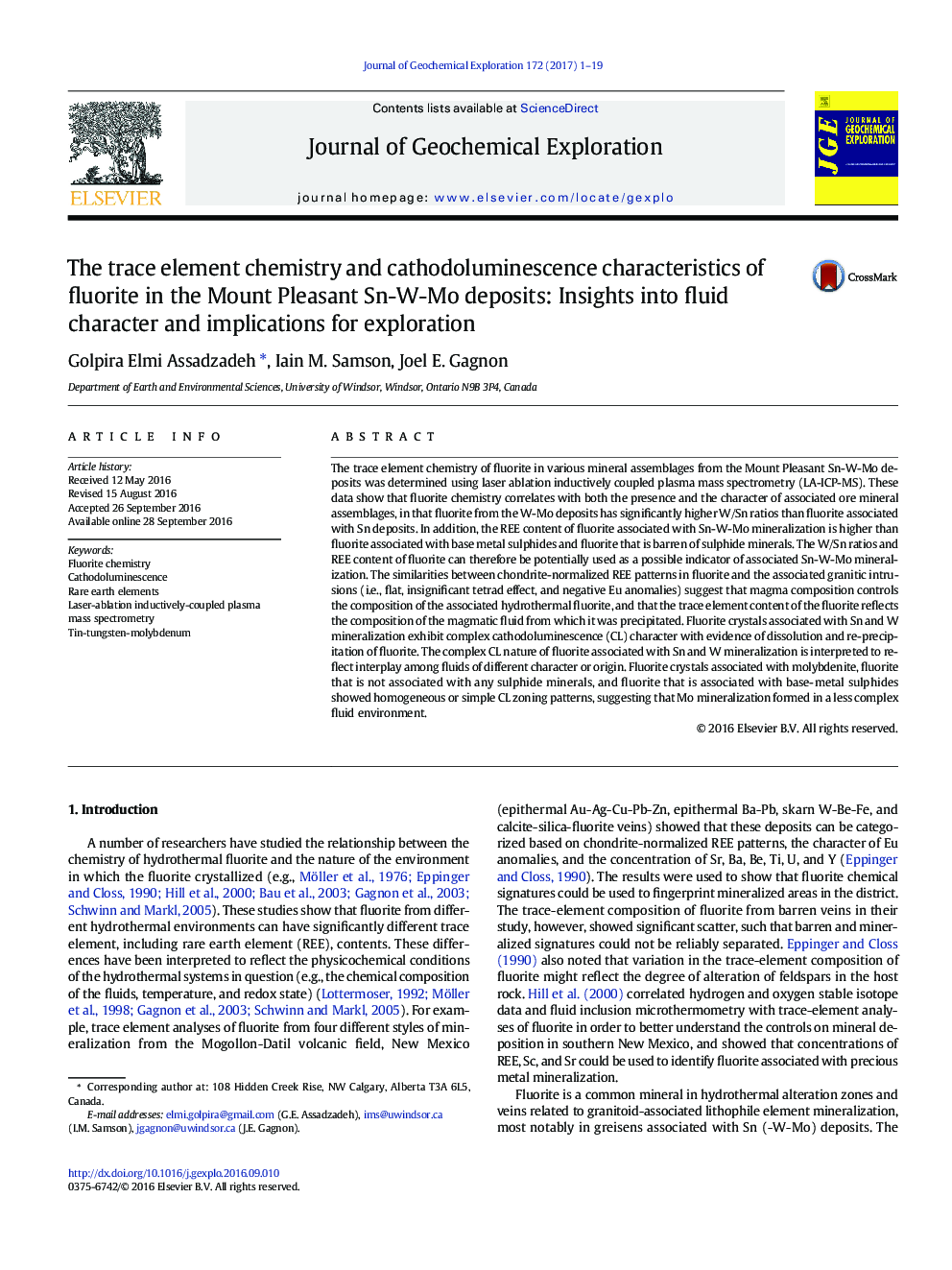| Article ID | Journal | Published Year | Pages | File Type |
|---|---|---|---|---|
| 4456872 | Journal of Geochemical Exploration | 2017 | 19 Pages |
•Possible interaction of fluids prior to mineralization Sn, W, Mo was discussed.•Magmatic fluid composition predominantly controls fluorite composition.•Meteoric fluids diluted the composition of the REE in late stage fluorite.•REE partitioning can be explained by chloride rather than fluoride complexation.
The trace element chemistry of fluorite in various mineral assemblages from the Mount Pleasant Sn-W-Mo deposits was determined using laser ablation inductively coupled plasma mass spectrometry (LA-ICP-MS). These data show that fluorite chemistry correlates with both the presence and the character of associated ore mineral assemblages, in that fluorite from the W-Mo deposits has significantly higher W/Sn ratios than fluorite associated with Sn deposits. In addition, the REE content of fluorite associated with Sn-W-Mo mineralization is higher than fluorite associated with base metal sulphides and fluorite that is barren of sulphide minerals. The W/Sn ratios and REE content of fluorite can therefore be potentially used as a possible indicator of associated Sn-W-Mo mineralization. The similarities between chondrite-normalized REE patterns in fluorite and the associated granitic intrusions (i.e., flat, insignificant tetrad effect, and negative Eu anomalies) suggest that magma composition controls the composition of the associated hydrothermal fluorite, and that the trace element content of the fluorite reflects the composition of the magmatic fluid from which it was precipitated. Fluorite crystals associated with Sn and W mineralization exhibit complex cathodoluminescence (CL) character with evidence of dissolution and re-precipitation of fluorite. The complex CL nature of fluorite associated with Sn and W mineralization is interpreted to reflect interplay among fluids of different character or origin. Fluorite crystals associated with molybdenite, fluorite that is not associated with any sulphide minerals, and fluorite that is associated with base-metal sulphides showed homogeneous or simple CL zoning patterns, suggesting that Mo mineralization formed in a less complex fluid environment.
